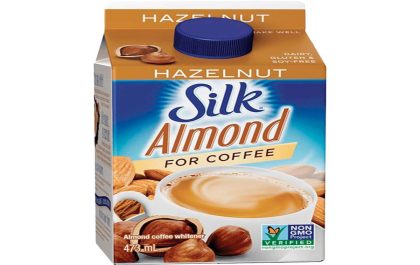Vigorous exercises are too strenuous to prevent sweat-labored breathing or an increased heart rate close to the maximum level. Activities like brisk walking, lap swimming, rollerblading, running, shoveling snow, and singles tennis are all considered vigorous exercises since they demand more than 6 METs (metabolic equivalent of oxygen consumption).
Cardiovascular mortality and overall physical activity, especially strenuous exercise, have a graded inverse relationship.
Table of Contents
ToggleExamples of Vigorous exercises
Many different types of exercises and sports do perform at a vigorous intensity, such as:

Martial arts
Jogging or jogging
Race walk
Uphill walking
Cycling more than ten loads per hour or steep uphill
Fast swimming or lap swimming
Dance, speed dancing, and step aerobics
Strength training
Heavy gardening with digging, hoeing
Paddling in heavy snow
I was doing sports with plenty of running, such as basketball, hockey, and football.
Singles tennis.
Court sports such as handball, racquetball, and squash.
Benefits of Vigorous exercises
- There are many reasons to take your education one step further. For example, engaging in vigorous physical activity can provide many health benefits.
- Low Risk of Chronic Disease
- Lack of vigorous exercise can lead to an increased chance of evolving a chronic disease such as coronary core disease, osteoporosis, and various types of cancer. For example, a 2012 study of more than 44,000 men aged 40 to 75 after 22 years settled that vigorous exercise was related to a lower risk of chronic disease among members.
- Improved Brain Health
- Vigorous exercises, especially intense ones, increase blood flow to the brain and oxygenate the brain’s frontal areas. So, it has been shown among school-aged students (those who exercised vigorously got better grades) older population.
- In a 2017 review, people aged 70 to 80 who had done 150 minutes of modest to vigorous exercise per week over the past five years were 40% less likely to develop Alzheimer’s disease. Compared to sitting individuals in their age group.
- Vigorous exercises improve mood
- It’s not surprising that exercise improves your mood. Still, a 2015 study found a significant link between vigorous exercise and fewer depressive symptoms among more than 12,000 participants, and moderate activity and walking did not affect depression.
Target heart rate tips
- It is essential to remember that maximum heart rate is only a guideline. Your maximum heart rate may be higher or lower, sometimes as high as 15 to 20 beats per minute. If you want a specific range, consider discussing your target heart rate zone with an exercise physiologist or personal trainer.
- In general, only elite athletes deal with this level of sensitivity. They may also use slightly different calculations considering gender differences in target heart rate zones. However, these differences are so minor that most casual athletes do not need separate measures for men and women.
- Also, remember that various types of medication, including some blood pressure-lowering medications, can lower your extreme heart rate and then your target heart rate zone. Enquire with your doctor if you need to use a lower target heart rate zone because of your medications or medical conditions.
- Interestingly, a study shows that interval training, which includes short (about 15 to 60 seconds) vigorous exercises alternating with longer, less strenuous exercises throughout your workout, is well tolerated, and it is safe even for those with heart disease and type 2 diabetes. This training is also very effective in increasing cardiovascular fitness and promoting weight loss.
Vigorous Exercise Benefits to Heart
Related posts
Compound Back Exercises: What Are They?
Introduction Multiple muscles are working simultaneously by compound workouts. Squats, pull-ups, and reverse lunges are typical Compound Back Exercises. While…
Is The Bretman Rock ab Workout Effective?
Introduction Bretman Rock, a social media influencer and former Vine sensation, shared his Not Workout with the world at the…
Which one Exactly is Daisy Keech’s ab routine?
Introduction Now is a detailed description of Daisy Keech’s ab routine. Every exercise is achieving back-to-back for 10 minutes without…
Vasa Fitness Joliet Provides a Fitness Regime
Introduction After debuting in Villa Park last month, it has a second site in Illinois at North Larkin Avenue. With…
Using the Best Heat Shield Sprays Before Styling
Introduction As hair ages, it gets drier and more delicate, making it more vulnerable to heat damage. You don’t have…
Suggestions for Red Curly Hair Routine Care!
Introduction Did you know that while a significantly bigger number of people carry the genetic factor and can pass it…
Control Of Dandruff Through Various Remedies
Introduction Small bits of dry skin chips have built up on the scalp as Dandruff, a common disease. Using shampoo…
Is Coconut Oil for Hair Beneficial?
Introduction The profits of Coconut Oil for Hair and scalp may be numerous, and it may hydrate and seal hair…
The Best for Lengthening Lashes Is L’Oreal Telescopic Mascara.
Introduction Your lashes are enhanced with L’Oreal Telescopic Mascara extreme length and distinctive lash-by-lash separation. The unique flexible precision brush’s…
SUGAR Cosmetics Is a Well-Known Brand in India.
Introduction SUGAR Cosmetics is an Indian e-commerce firm that sells cosmetics and skincare items that are youth, best suited for…
How To Make Eyeliner Stay Avoid Smudging
Introduction You’re not alone if you notice that, over the day, your Eyeliner Stay begins to budge. Smudging, smearing, or…
A CVS Best Beauty Item Is What?
Cosmetics, fragrances, hair care, hair colour, facial care, and hand and body lotion are qualifying beauty purchases. It Excludes medicines,…
Subway Footlong Calories-Nutritional and Healthy Menu Options
Introduction One of the most well-known fast-food restaurants in the world, Subway has more than 40,000 outlets throughout the globe….
Hazelnut Creamer Enriches the Flavours.
Introduction Hazelnut is a type of nut with thin, light brown skin and is usually oval or spherical. Hazelnuts harvests…
What Is Gel Tab?
Introduction A Gel Tab is a drug that contains an opioid, like hydrocodone or oxycodone, and a non-steroidal anti-inflammatory drug…
What is Diet Root Beer?
Introduction India can produce incredibly distinctive root beer using spices and chillies. A wide variety of delectable tastes and smells…
Get Ready for BroadBand Light BBL Treatment
Introduction Intense pulsed light is harnessed by BroadBand Light technology to BBL Treatment outstanding photo rejuvenation treatment outcomes. A wide…
The Skin Story Moisturizer Uses
Introduction The Skin Story Moisturizer Cream provides a balanced moisturising and hydrating effect. With the help of our moisture-boosting cream,…
Neck Skincare: Routine you Need to Know.
Introduction Most of us learn how to practise excellent hygiene and take care of our Skin from an early age….
Amrutam Face Cleaning an Ayurvedic Product
Introduction Amrutam Face Cleaning guarantees complete skin cleaning. It is an Ayurvedic acne remedy that moisturises and feeds the skin…





















